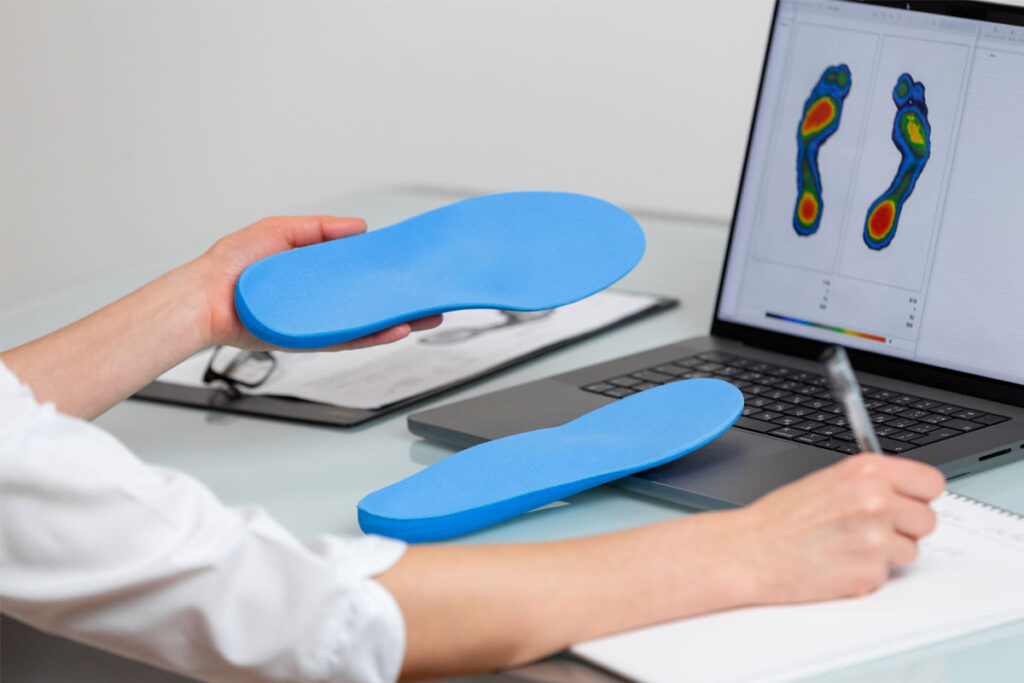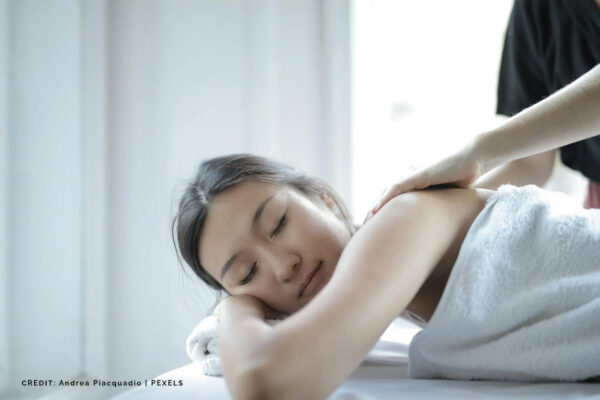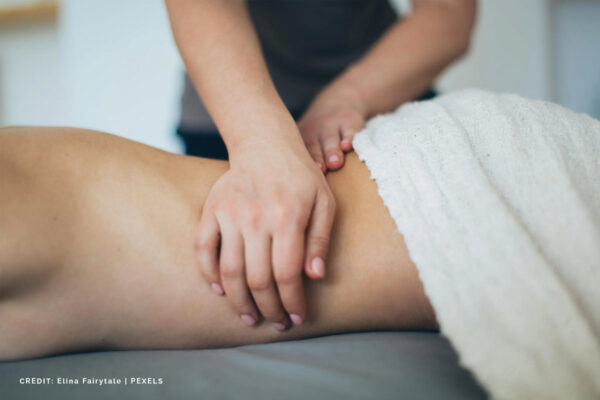How Orthotics Reduce Stress on Your Joints
Joint pain can make even simple activities like walking or standing feel uncomfortable. Many people don’t realize that improper foot alignment is a major contributor to joint stress, leading to discomfort in the ankles, knees, hips, and lower back. Orthotics are specially designed shoe inserts that provide support and correct alignment, helping to reduce strain on the joints. With the right orthotics, people can move more comfortably and minimize joint pain over time.
How Foot Mechanics Impacts Joint Stress
The way your feet function plays a crucial role in the overall health of your joints. Since your feet support your entire body weight, even slight misalignments can have a ripple effect, causing strain on your ankles, knees, hips, and spine. Poor foot mechanics can lead to pain, stiffness, and long-term joint problems if left unaddressed.
How the Feet Affect the Entire Body
The feet support the entire body, absorbing impact and ensuring smooth movement. When they are misaligned, the joints must compensate, leading to strain, pain, and long-term mobility issues.
Properly aligned feet help distribute impact forces evenly, preventing excessive strain on the knees, hips, and lower back. Without proper support, the force of walking and running can accumulate in the joints, leading to discomfort and long-term damage.
Balanced foot positioning prevents certain joints from bearing too much pressure, which can cause pain and misalignment. When weight is unevenly distributed, the joints in the ankles, knees, and hips must work harder to maintain stability, increasing the risk of wear and tear.
Correct foot posture ensures that the entire musculoskeletal system stays in proper alignment, reducing unnecessary stress on the joints. Misaligned feet can lead to compensatory movements, which often result in joint pain, poor posture, and mobility issues.
Stable feet provide a solid foundation, allowing muscles to work more efficiently without excessive strain. When foot instability forces muscles to overcompensate, it can lead to fatigue, soreness, and an increased risk of injuries.
Proper support minimizes the risk of joint pain, inflammation, and conditions like plantar fasciitis or arthritis. Misalignment in the feet can create a domino effect, leading to chronic discomfort and limiting overall mobility.
Poor Foot Alignment and Joint Strain
When the feet are not properly aligned, they can put excessive stress on the joints, leading to discomfort and long-term damage. Misalignment forces the body to compensate, which can cause pain in the ankles, knees, hips, and lower back.
Misaligned feet shift weight unevenly, causing certain joints to bear more pressure than they should. Over time, this added stress can wear down the cartilage, increasing the risk of arthritis and chronic pain.
Poor foot posture can force the knees inward or outward, leading to strain and instability. This misalignment can weaken the ligaments, making the knees more vulnerable to injuries like sprains and tendonitis.
- Hip and Lower Back Strain
Foot imbalance affects posture, which places extra stress on the hips and spine. When the hips are misaligned, it can cause muscle imbalances and chronic discomfort in the lower back.
Flat feet or high arches can prevent the feet from properly absorbing impact, increasing stress on the joints. Without proper cushioning, activities like walking or running can lead to joint inflammation and pain.
The body adjusts to foot misalignment by altering movement patterns, which can create further joint strain over time. These unnatural movements can affect balance, leading to fatigue and a higher risk of falls or injuries.
Effects of Overpronation and Supination
Overpronation and supination are common foot alignment issues that can lead to joint strain and discomfort. These conditions affect weight distribution, posture, and stability, increasing the risk of injuries and chronic pain.
Overpronation forces the knees to rotate inward, while supination places excessive stress on the outer knee. Both conditions can contribute to ligament strain and joint pain.
Poor foot mechanics can cause the hips to tilt unevenly, leading to muscle imbalances and discomfort in the lower back. Over time, this misalignment can affect overall posture and mobility.
Excessive inward or outward foot rolling weakens the ankle joints, increasing the risk of sprains and instability. This instability can make movements less controlled, leading to frequent injuries.
Overpronation overstretches the plantar fascia, causing inflammation and heel pain. Without proper support, this condition can become chronic and affect daily movement.
Reducing Joint Stress with Orthotics

Orthotics provide essential support by correcting foot alignment and improving weight distribution. By reducing strain on the joints, they help prevent pain, improve mobility, and lower the risk of long-term damage.
Proper foot posture ensures that the body’s weight is evenly distributed across the feet. When the feet are misaligned, the body compensates by shifting weight to different areas, leading to joint stress. Orthotics correct foot posture by supporting the arches and stabilizing the heel. This reduces excessive movement and prevents improper joint alignment, minimizing the risk of pain and long-term joint problems.
- Improving Shock Absorption
Each time your foot hits the ground, it absorbs the force of your body weight. Without adequate cushioning, these forces travel up your legs, affecting your knees, hips, and spine. Orthotics are designed with shock-absorbing materials that help soften the impact of each step. By reducing the amount of force that reaches the joints, orthotics lower the risk of joint pain and protect against wear and tear.
- Enhancing Even Weight Distribution
Uneven weight distribution can put excessive strain on specific joints, leading to pain and inflammation. For example, if one foot bears more weight than the other, the knees and hips must work harder to compensate. Orthotics help distribute weight evenly across the feet, ensuring that no single joint is overworked. This balanced support reduces joint strain and promotes better overall movement.
- Promoting Proper Gait Mechanics
An improper walking pattern can put extra stress on your joints. If your feet roll inward or outward too much, your knees and hips may twist unnaturally, leading to pain and discomfort. Orthotics guide the feet into a more natural movement, preventing excessive side-to-side motion. By promoting proper gait mechanics, orthotics help prevent joint stress and improve overall mobility.
- Reducing Fatigue and Muscle Compensation
When your feet lack proper support, other muscles and joints must work harder to maintain balance and stability. Over time, this leads to muscle fatigue and joint discomfort. Orthotics reduce unnecessary strain on muscles and ligaments by providing the support needed to keep the feet properly aligned. This prevents overuse injuries and makes movement more comfortable and efficient.
The Impact of Orthotics on Different Joints
Orthotics help align the feet properly, which reduces unnecessary stress on the joints. By improving stability and balance, they support the ankles, knees, hips, and lower back, preventing pain and long-term strain.
The ankles play a key role in maintaining stability and absorbing impact forces. When foot alignment is off, the ankles compensate by rotating inward or outward, increasing the risk of sprains, instability, and pain. Orthotics help stabilize the ankles by ensuring proper foot positioning, reducing the likelihood of excessive movement and improving overall balance.
The knees are highly affected by foot misalignment, as they must adjust to improper weight distribution. Conditions like runner’s knee and patellofemoral pain syndrome often develop due to excessive pressure on the kneecap caused by poor foot mechanics. Orthotics help correct foot alignment, reducing stress on the knees and preventing long-term joint problems.
When the feet and knees are misaligned, the hips must work harder to maintain stability. This additional strain can cause hip pain and contribute to conditions like bursitis or arthritis. Orthotics provide the necessary support to ensure that weight is evenly distributed, reducing the strain on the hip joints and promoting better movement.
Foot misalignment can affect posture, leading to spinal misalignment and lower back pain. Poor foot mechanics force the spine to compensate, resulting in discomfort and stiffness. Orthotics help improve posture by aligning the feet properly, reducing strain on the lower back and promoting overall spinal health.
Choosing the Right Orthotics for Joint Relief
Selecting the right orthotics is important for ensuring proper support and comfort. The right design helps improve alignment, reduce joint strain, and prevent further discomfort.
- Custom vs. Over-the-Counter Orthotics
Custom orthotics are designed based on an individual’s foot shape and movement patterns, offering targeted support. Over-the-counter orthotics provide general relief but may not fully address specific alignment issues. If joint pain is persistent, custom orthotics are often the best option for personalized support.
- Features to Look for in Orthotics
Arch support helps maintain proper foot posture and prevents overpronation, ensuring even weight distribution. Shock absorption reduces the impact on the joints, which helps prevent pain and discomfort during movement. Heel stabilization keeps the foot in a neutral position, minimizing strain on the ankles and knees for better overall alignment.
- When to Consult a Specialist
If joint pain is affecting daily activities, it’s important to seek professional advice. A podiatrist or physiotherapist can assess foot mechanics and recommend the best orthotics for specific needs. Proper evaluation ensures that the right support is provided for long-term joint relief.
Maximizing the Benefits of Orthotics for Joint Health
To get the most out of orthotics, they must be properly fitted and used consistently. Wearing them daily and pairing them with supportive footwear can enhance their effectiveness in reducing joint strain.
Regular use of orthotics is necessary to see improvements in joint health. Inconsistent use can delay progress and allow joint pain to return. Over time, continuous support helps correct misalignments and reduces discomfort.
- Pair Orthotics with Supportive Footwear
Supportive shoes enhance the effectiveness of orthotics by providing additional stability. Wearing unsupportive footwear, such as flip-flops or high heels, can counteract the benefits of orthotics. Choosing well-cushioned, well-structured shoes ensures better joint protection.
- Maintain an Active Lifestyle
Strengthening the muscles around the joints helps improve stability and reduce strain. Low-impact exercises like swimming, cycling, and walking can complement the benefits of orthotics. Staying active promotes joint flexibility and long-term health.
Experience Lasting Relief with PARC of Ontario

Joint pain can make daily life more difficult, but proper support can provide relief. At PARC of Ontario, we offer high-quality orthotics in Whitby designed to improve foot alignment and reduce stress on the joints. Whether you need custom support or guidance, our team is ready to help you move comfortably. Call us today at (905) 579-9938 to find the right orthotics for your needs.





